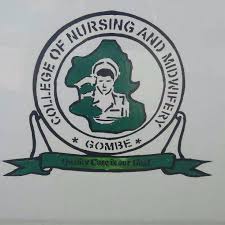IJMB Chemistry 101 Past Questions 2023; This Chemistry 101 Past Question is suitable for students about to sit for the upcoming IJMB EXAMINATION. Students should be informed that IJMB is an advanced-level program that helps students secure admission into the university of their choice without JAMB.
Recommended; See Other IJMB Past Questions Here
IJMB Chemistry 101 Past Questions 2023
INTERIM JOINT MATRICULATION BOARD EXAMINATION 2023
SUBJECT: CHEMISTRY PAPER 1
DATE SCHEDULED: SATURDAY 22nd JULY, 2023
TIME ALLOWED: THREE HOURS
INSTRUCTIONS:
i. Answer ALL questions in section A and any FOUR (4) questions from section B.
ii. Each question in section A carries 3 marks while each question in section B carries 25 marks.
iii. The use of a scientific programmable calculator is PROHIBITED.
iv. Table of constants:
Gas constant R = 8.314 JK-1 mol-1
Molar volume of gas at STP, Vm = 22.4 dm3
Avogadro’s constant, NA = 6.023 x 1023 mol-1
Faraday constant, F = 96500 C mol-1
1 atomic mass unit (a.m.u)= 931.5 MeV = 1.6023 x 10-13 J
Rydberg constant, RH = 109678 cm-1
1 atmospheric pressure = 760 mm Hg= 1.013 x 105 Nm-2
Atomic numbers of the following elements are: N = 7, Mg = 12, Cu =29, Si = 14, Zn=30,
Co = 27 and H = 1
Atomic masses of the following elements are: H = 1, N = 14, O = 16, Mg = 24, CI = 35.5
And S = 32 and Si = 28.
SECTION A
- State the type of bonding in each of the following:
- CsF(s) (b) N2(g) (c)Na(s) (d) O3(g) (e) MgCl2(s).
2. (a) Suggest the IUPAC names of two oxides of nitrogen that are neutral to moist litmus
Paper.
(b) Define the following terms:
(i) Molecularity of a reaction ; (ii) Unit cell of a crystal; (iii) Lattice defect.
3. (a) Define an element.
(b) How many atoms are there in each of the following:
(i) 3 moles of scandium? (ii) 32 g of hydrogen sulfide? (iii) 13 g of silicon?
4. In the complex ion, [Zn(OH)4]2-
- Give the oxidation number of Zn in the complex.
- What is the coordination number of Zn in the complex ion?
- Draw the structure of the complex ion and indicate any co-ordinate covalent
bond(s) involved.
(d) What is the metal chloride formed?
5. A 1.32 g of magnesium was dissolved in diluted hydrochloric acid and the solution was heated in a stream of hydrogen chloride. If 5.26 g of an anhydrous metal chloride remained, what is the simplest formula of the metal chloride formed?
6. Consider the following elements of the elements in the periodic table: F, He, Cs,Cl, Mg and
K. which of them:
- has the lowest electronegativity value? (b) has the highest electron affinity value?
(c)exist as monoatomic species at room temperature? (d) has the largest atomic size?
(e) has the highest ionization potential?
7. (a) Explain briefly how the change in temperature can affect solute in a given solvent.
(b) If the solubility of copper (II) tetraxosulphate (VI) pentahydrate (CuSO4.5H2O) at 300C is
25g per 100g of water, what is the maximum mass of crystals that will be obtained from
10g of the solution?
8. The isotope 4219K undergoes B-decay to form 4220 Ca. If after 62.0 hours, 96.88 percent of 2042Ca was found to have undergone a transformation, what is the half-life of the isotope?
9. State the reason for each of the following statements about alkali metals:
- They are univalent
- They have a poor complex tendency
- They are strong reducing agents
- They have the lowest first ionization enthalpy values in their respective periods.
- They are largely ionic in nature
10. (a) Define the rate of a chemical reaction
(b) A drop of water of volume 0.05 cm3 from a pipette contains 3.0 x 10-6 mole of hydrogen
Ion. If the rate disappearance of the hydrogen ion is 1.00 x 10-7 dm3 mol-1 S-1, how long
Would it take for the hydrogen ion in the drop to disappear?
SECTION B
11. (a) Define the following terms; (8marks)
(i) standard heat formation of a substance; (ii) standard heat of contribution;
(iii) standard heat of sublimation; (iv) standard heat of atomization.
(b) State Hess’ law of heat summation. (2marks)
(c)A tautomeric keto (A) – enol (B) equilibrium can be represented as follows:
H H OH
| | |
H —–C——C——H ⇄ C 二 C
| | |
H H H
Given the following bond energy values:
C-H= 435 kJmol-1; C-C=368 kJmol-1;C=C=610 kJmol-1;C-O=357 kJmol-1
C=O=748 kJmol-1;O-H=462 kJmol-1
(i) Calculate the enthalpy change from the keto form (A) to the enol form (B). (7marks)
(ii) Assuming the entropy change for the conversion of (A) to (B) is zero, calculate the equilibrium constant for the keto-enol equilibrium at 270C. (8marks)
12. (a) Write the electron configuration of the valence shell of the following group of elements in the periodic table: (i) Group 2; (ii) Group 13; (iii) Group 15. (3marks)
(b) Using an example of any member of a group 2,
(i) Write the formula of an oxide of a group 2 element; (1 mark)
(ii) What is the bond type of the oxide in (i) above? (1marks)
(iii) Write the chemical equation for the reaction of the oxide with water.(2marks)
(iv) gives an equation of the reaction between HCI and the product formed in (iii) above. (2marks)
(c)Account for each of the following observations:
(i) Whereas both zinc and copper have the same d electron configuration, zinc or its ion is a
non-transition element but copper or its ion is regarded as a transition element. (4marks)
(ii) The maximum covalency of carbon is four but that of silicon is six. (5marks)
(iii) The melting point of AIF3 is greater than that of AICI3 (5marks)
(d) What do you understand by the term ‘’catenation’’? (2marks)
13. (a) State five assumptions of the kinetic theory of gases. (5marks)
(b) Deduce the following gas laws from the kinetic theory equation of an ideal gas: (10marks)
(i) Avogadro’s law; (ii) Graham’s law of diffusion.
(c)The van der Waal’s equation for a mole of real gas is
(P + a–V2) (V-b)=RT
Compare this equation with the equation, PV=RT for a mole of an ideal gas and explain why the volume and pressure corrections are necessary. (7marks)
(d) Calculate the pressure of one mole of oxygen gas at 200K when placed in a 1 dm3 container assuming ideal behavior. (3marks)
14. (a) Explain the following concepts of acids and bases giving appropriate examples in each case: (9marks)
(i) Arrhenius; (ii) Lewis; (iii) Bronsted- Lowry.
(b) Classify the reactants in the following reactions as acid or base and identify the acid-base conjugate pairs:
(i) CH3COO + HCN ⇌ CH3COOH + CN–
(ii) H2PO4– + NH3 ⇌ HPO42- + NH4+
(iii) HCIO + CH3NH2 ⇌ CH3NH3+ + CIO–
(c)(i) Arrange the following equimolar solutions in order of increasing pH:
NH4CI, KOH, HCI, KCI, HCOOH, and HCOONa. Give reasons for your order of
arrangement. (6marks)
(ii) Give two physical methods to show that HCI dissociates more in aqueous solution than
Methanoic acid. (4marks)
15. (a) Give 4 postulates of Bohr atomic theory. (4marks)
(b) State 2 of the successes and limitations of Bohr’s Atomic theory. (4marks)
(c)Explain the experimental evidence for the small size of the nucleus of an atom (detail of
the experiment is not required). (5marks)
(d) Calculate the ionization enthalpy of the hydrogen atom. Given that the frequency of
convergence limit of the Lyman series of a hydrogen atom is 3.29 x 1015 Hz. (4marks)
(f) Explain the importance of n, l, m, and s quantum numbers in the orbital arrangement of
electrons in atoms. (8marks)
16. (a) Compound A,[FeBr(H2O)5]SO4 is isomeric with another compound B,[FeSO4(H2O)5]Br
(i) What type of isomerism exists between the compounds, A and B? (1 mark)
(ii) What ions would this isomerism yields in an aqueous solution? (4marks)
(iii) Using simple laboratory tests, explain how you can differentiate between the two
Isomers? (6marks)
(iv) State the oxidation state, electron configuration, and coordination number of Fe in
Compound A? (4marks)
(b) Draw the structure of [FeBr(H2O)5]2+ and indicate all the coordinate covalent bonds involved.
(2marks)
(c)Give the formula of an example of each of the following: (6marks)
(i) cationic complex of cobalt, (ii) anionic complex of cobalt; (iii) neutral complex of cobalt.
(d) Give two examples of double salts. (2marks)






